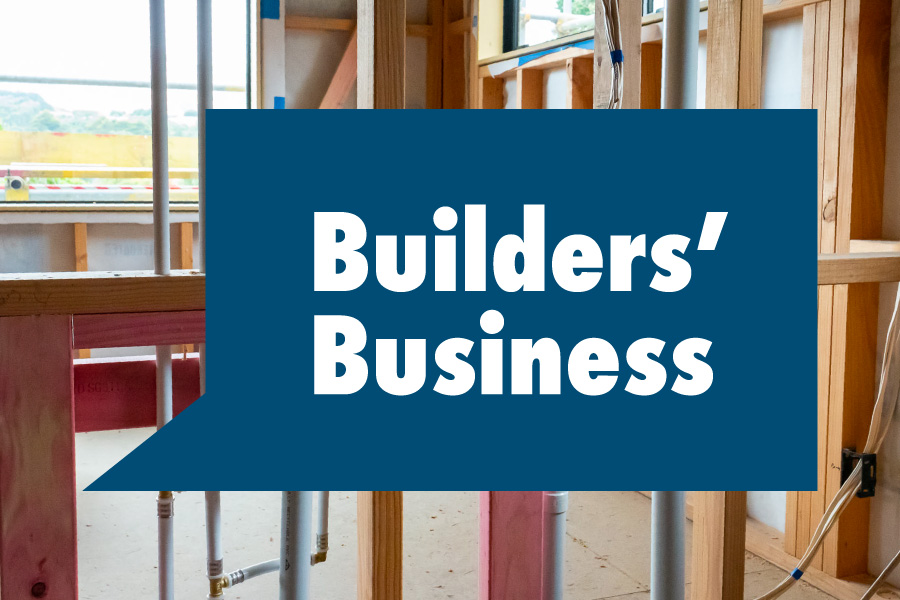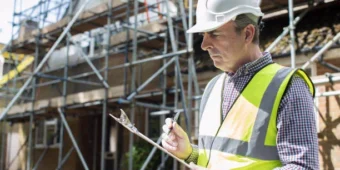MANAGING MATERIAL SHORTAGES
25 Nov 2021, Builders business, Featured, News

Builders’ Business is a column by builders for builders. Its objective is to provide a forum, particularly for small business operators, in which to share knowledge, experience, tips and ideas
Q. How are you handling delays caused by material shortages?
Firm: Fixation Builders Limited
Interviewee: Darren Robinson
Role: Owner / Director
Location: Queenstown
Staff: 11
Basically, I’m just doing my best to work with the delays, because I think all you can do is be adaptable in this type of environment. Gone are the days when you can just swing by PlaceMakers and pick up a sheet of plywood, so, as soon as I sign a contract with a client, I order the materials.
We’ve moved to a charge-up model, which has been well received and seems like a win-win in the current environment where price increases are happening nearly every month. It allows us to charge the client as the materials come in, which helps get ahead of future price increases.
There are definitely long lead times at the moment; some can be 30 weeks or more, but as long as they’re well communicated – and PlaceMakers has been doing a great job at this – we can work that into our planning. If the lead times ever changed significantly, that would definitely throw things out, but so far, so good.
It’s an interesting time to be in building in general. When I started my company six years ago, I was out selling myself to clients. These days, demand is so high that it’s more like clients are selling themselves to me.
Firm: Glenn Grant Builders
Interviewee: Glenn Grant
Role: Owner / Director
Location: Nelson
Staff: 6
Well, it’s safe to say that we’ve had to go through a short and steep learning curve in order to deal with all the uncertainty. These days, it’s all about planning ahead and setting realistic client expectations. Even then, nothing seems certain.
Until now, clients have been pretty good, but as the months drag on and the shortages that we didn’t see coming get longer and longer, they get understandably annoyed. There’s a roof we’re putting on today that’s had a tarp over it for a month, which obviously isn’t ideal. What it really means is that my job is a lot about putting out fires these days, and making sure my guys on site aren’t getting hammered with questions they can’t answer, and answers they can’t control.
To keep some things moving, we’ve also had to look at changing up materials due to wait times that are just too long. This can work, but isn’t a straightforward option, as it involves a significant amount of research to ensure the substitute material will perform equally, isn’t too different in price and, of course, is actually available! And, most importantly, the client needs to agree to the change, which understandably frustrates some of them. Then you need to get the council to approve the substitution.
Another thing we’ve done is switched to a charge-up model. We’ve always used one for renovations, because you never know what you’ll find, but now we use it for everything including new builds, because you never know where prices will be in a year’s time!
Firm: Shore Build Limited
Interviewee: Ash Shore
Role: Owner / Director
Location: Auckland
Staff: 24
It’s certainly been an interesting time. For us, material shortages and delays have been a reality for all of 2021. It started with cladding, then cedar products, the Abodo, then powdercoat. We got to a point where we were calling every supplier in town to get any bit of powdercoat we could to finish a job.
It’s had a major impact on our work programme, which means our overhead costs are just going through the roof. We still have two projects on the go that were priced and confirmed just before lockdown – one residential project and one commercial school job – both at fixed prices.
The residential project would have normally been done six months ago, but we’re still waiting on some materials to finish it up. The commercial one was always a three-year project and we allowed for some escalation in prices, but never this much. To ensure we can finish this job and not be in the red, we’ve built an enclosure on site to house the materials we’ve pre-ordered to avoid additional cost increases and delays.
Despite all the uncertainty, it’s still competitive in Auckland and clients are looking for some level of assurance when it comes to price, so we do our best. We lock in as much as we can through the carpentry component and pre-ordering materials, but there has to be some fluctuation for sub-trades and other unknowns.
Register to earn LBP Points Sign in



